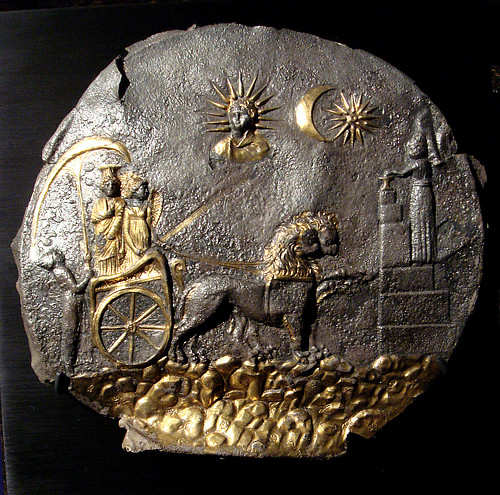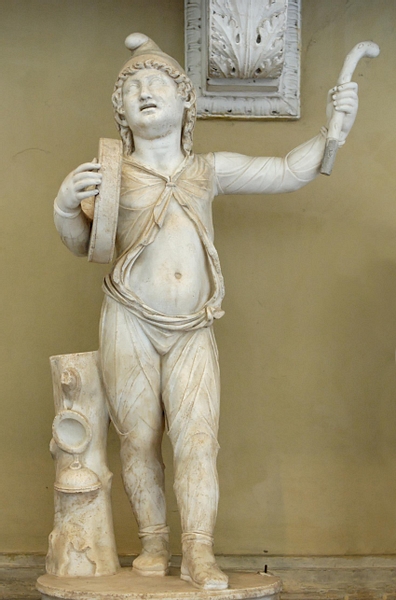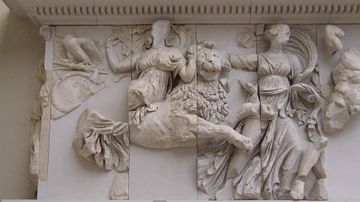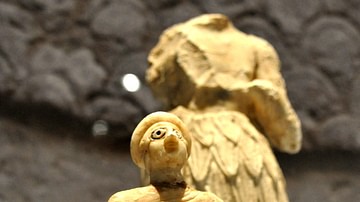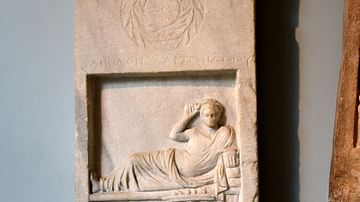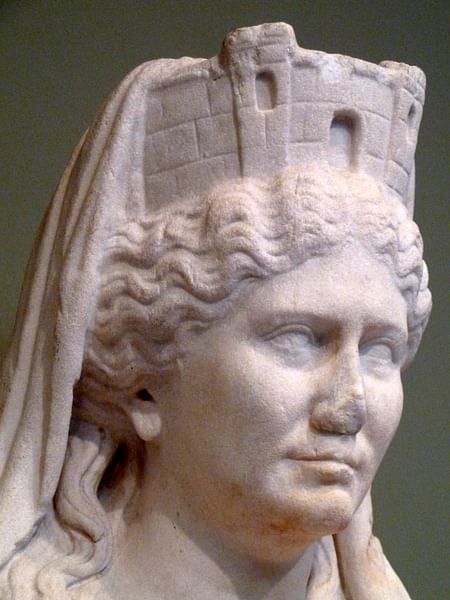
History verifies the importance of religion not only on a society's development but also on its survival; in this respect the Romans were no different than other ancient civilizations. During the formative years of the Roman Republic, especially after its territorial acquisitions following the Four Macedonian Wars, contact with the Greek culture — especially their religion — left a lasting imprint on the Roman way of life. Along with other aspects of the Hellenic civilization, the Romans adopted the pantheon of Greek gods, although they changed many of their names. However, besides this array of deities, they also acquired several of their cults, and cults were not always welcomed by those in authority, a concept that would carry through into the Empire. While Bacchus (Dionysus to the Greeks) was the most notable of these cults and to those in authority, and considered the most threatening to social order, this contact also brought a less menacing sect: the Cult of Cybele.
Greek Gods in Rome
The Hellenic culture had arrived, and to ward off this influx and its impact on society, Roman authorities felt the need to reaffirm their moral superiority over the Greeks; after all, they had been victorious in battle against Greece. The appearance of Greek culture had been, for the most part, positive. Under this Greek influence, the Roman gods became more human, exhibiting such diverse characteristics as jealousy, love, and hate. However, unlike in Greece, in Rome an individual's self-expression of belief was not considered as important as adherence to ritual. In an effort to avoid religious zeal, the state demanded a strict adherence to a rigid set of rituals. While this integration of the Greeks gods was never seen as a viable threat — they easily fit into the existing array of gods — some cults proved to be something completely different: a genuine danger to the prevailing state religion.
In 186 BCE the Roman Senate, recognizing a potential menace, suppressed the worship of the Greek god of wine, Dionysus, known to the Romans as Bacchus. His worship is best remembered for its intoxicating festival held on March 17, a day when a Roman male youth would supposedly become a man. The cult was viewed as being excessively brutal, supposedly involving ritual murder and sexual excess. As a result, many of its adherents were either imprisoned or executed. It should be noted, however, that the authority's fear of this cult was largely generated, not from first-hand experience (the cult's rituals were always conducted in secret) but from the writings of the historian Livy (c. 64 BCE-17 CE) who consistently portrayed the cult as a dangerous menace to social stability and characterized adherents as little more than drunken beasts.
While the government, influenced by Livy, viewed this cult as a threat, overall, Roman citizens questioned this harsh view of the Cult of Bacchus. They considered it no different or less immoral than the worship of the Asia Minor goddess Cybele. Actually, the major difference between the two was that the Cult of Bacchus was never sanctioned by the Roman Senate while Cybele's was. Known as the Great Mother or Magna Mater, Cybele, whose chief sanctuary was at Pessinus, was one of the early female deities, first appearing in the province of Lydia as a goddess of the mountains. Arriving from Phrygia, she made her initial appearance in Greece in the 5th century BCE with a temple in Athens (the Metroum); the Greeks identified her with the goddess Rhea (mother of the Olympians) and Demeter (goddess of the harvest). While never achieving great popularity in Greece, the cult reached Rome around the end of the 3rd century BCE.
The Cult of Cybele in Rome
Originally, the Cybelean cult was brought to Rome during the time of the Second Punic War (218 -201 BCE). At that time the Carthaginian general Hannibal was wreaking havoc in Italy, posing a serious threat to the city of Rome. The Sibylline Books, books of prophecy consulted by the Roman Senate in times of emergencies, predicted that Italy would be freed by an Idaean mother of Pessinus; to many, this meant Cybele. A black meteorite, representing the goddess, was brought to Rome from Asia Minor in 204 BCE. Miraculously, Hannibal and his army left shortly afterwards to defend Carthage against the invading Romans; a temple honoring Cybele would be built on Palatine Hill in 191 BCE. The cult eventually achieved official recognition during the reign of Emperor Claudius (41 - 44 CE). Ultimately, her appeal as an agrarian goddess would enable her to find adherents in northern Africa as well as Transalpine Gaul.
Due to its agricultural nature, her cult had tremendous appeal to the average Roman citizen, more so women than men. She was responsible for every aspect of an individual's life. She was the mistress of wild nature, symbolized by her constant companion, the lion. Not only was she was a healer (she both cured and caused disease) but also the goddess of fertility and protectress in time of war (although, interestingly, not a favorite among soldiers), even offering immortality to her adherents. She is depicted in statues either on a chariot pulled by lions or enthroned carrying a bowl and drum, wearing a mural crown, flanked by lions. Followers of her cult would work themselves into an emotional frenzy and self-mutilate, symbolic of her lover's self-castration.
Cybele & Attis
Important to the worship of Cybele was Attis, the Phrygian god of vegetation, also considered a resurrection god (similar to the Greek Adonis). Supposedly, Attis was Cybele's lover, although some sources claim him to be her son. Unfortunately, he fell in love with a mortal and chose to marry. According to one story, on the day of their wedding banquet, the irate and jealous goddess apparently struck panic into those who attended the wedding. Afraid for his own safety (no mention is made of his bride), the frightened groom fled to the nearby mountains where he gradually became insane, eventually committing suicide but not before castrating himself. Regaining her own sanity, the remorseful Cybele appealed to Zeus to never allow Attis's corpse to decay. Myth claims that he would return to life during the yearly rebirth of vegetation; thus identifying Attis as an early dying-and-reviving god figure.
Cybelean Festival
In Rome, Cybele's popularity continued to flourish, partially due to her spring festival held in March (some sources say April) called the Megalensia. The festival included public games as well as a theatrical performance at Circus Maximus. It began on March 15 with a procession of reed-bearers (cannophori) and a ritual sacrifice; the latter was for the successful planting of spring crops. On March 22, after a week of fasting and purification, a pine tree (the symbol for Attis) was brought to Palatine Hill temple. Later, there was a banquet — a day of joy or Hilaria. Next came the Day of Blood, March 24, representing the castration and death of Attis. The celebration closed on the March 25 with a ritual bath or lavation of Cybele's image. All of the cult's priests or Galli were eunuchs, something that initially prevented Roman citizens from joining. Until the reign of Claudius, Roman law stated that no one could maintain his citizenship if he became a eunuch.
Cybele was one of many cults that appeared in Rome. Some were considered harmless, the Cult of Isis for example, and allowed to survive while others, like Bacchus, were seen as a serious threat to the Roman citizens and was persecuted. Of course, almost all of these cults disappeared with the arrival of Christianity when Rome became the center of this new religion. The Cult of Cybele lasted until the 4th century CE, at which time Christianity dominated the religious landscape and pagan beliefs and rituals gradually became transformed or discarded to suit the new faith.

